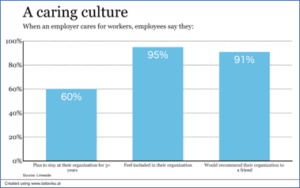If the COVID-19 pandemic has not taught us anything, we can boldly say that it has taught us one thing, which is the fact that it is very dynamic and presents us with a very fluid situation that is changing all the time. As such, any prescription given here albeit largely applicable, are to serve as a guide but not to be taken as the holy grail or as exhaustive.
- Keep Employees Informed with Accurate and Updated Information
COVID-19 has brought with it uncertainties, anxieties, fears and what have you. Even the experts sometimes come across as confused and give us conflicting information. It is for this reason that Management and Internal Communicators, especially the Human Resources department should aim to keep employees calm and try to keep stress at the very minimum by providing regular updates and tips on how to stay safe. Transparency in time like this cannot be taken for granted. Now more than ever, Management must foster a caring culture. For years to come, even when this pandemic is over, people will still remember how their company made them feel during this deadly period. There are research findings that confirms this as shown in the figure below.

In this regard, provide useful advice on how to stay safe, information on good hygiene and any other relevant information. Such information should be circulated at least once a week via the various channels available to staff i.e. email, WhatsApp, etc. In addition, there should be visible notices placed at vantage points across all parts of the organization and at all its locations. This will create the awareness and bring the issues relating to the pandemic at the front of the mind for all employees.
- Seek to Have the Barest Minimum of Employees at the Workplace
One of the characteristics of the coronavirus is that it thrives on human interaction. As such, the less people interact the likelihood of stifling the virus and thereby impeding its growth. It is against this backdrop that organisations should find creative ways of reducing the number of their employees working in the office. Remote work has become very popular since the pandemic started and any organization that has not implemented it yet should seriously consider it. One option of doing this is putting your workforce into two teams i.e. Team A and Team B with each team taking turns to work in the office or at home. So, for example all those in Team A will work in the office this week while all those in Team B work from home. Then next week they will swap. It is important to ensure that there is no ‘cross carpeting’ of any person moving from one team to the other to avoid cross contamination. In line with this same principle, the organization can put in place a system that allows all employees with underlying health conditions to work from home throughout and not come into the office at all. In short, if your employees can do their work from home, then let them do so. That way, you are significantly reducing the chances for the virus to appear and spread within and outside your workplace.
- Provide a One-Stop Shop Information Centre for Employees
People are scared, and they naturally have plenty of questions around the coronavirus. Even though you may feel like there is no way to answer all your employees’ questions, there are simple ways to communicate the important information your employees need. Aside, sending regular updates and tips to your employees, designate an office where employees can contact for any enquiries. The contact person for this role should be circulated with his/her her contact details for easy access.
- Put in Place an Early Warning Signal System
As a proactive measure, put in place a data collection system that allows Management to identify high risk persons and proactively monitor them and target them with measures that will reduce their risk. The organization can hire an occupational health professional to handle this as some of the issues can get technical. It must be pointed out that the data collected must be handled in the strictest of confidence to protect the privacy of employees and must be used for the purpose of COVID-19 decision making and nothing else.
- Encourage Testing of Employees at the Cost of the Organization
As part of the early warning signal system, the organization should put in place measures that allows employees who come into contact with suspected cases or those who show some symptoms to immediately inform the relevant officer in charge and get screened immediately at the cost of the organisation. This will help to identify positive cases early enough and prevent multiple infections at the workplace.
- Empower Managers to Lead the Change
Managing this COVID-19 at the workplace is a change management issue. Everyone is personally affected by COVID-19; whether you have a family member who is sick, you’re struggling to be in isolation or you’re learning to work from home and/or learning to work with family at home. Everyone on your team may be at a different point of the change continuum as they deal with their own transitions. We are all learning to let go and to embrace a new reality over time. And no matter where you may be on the change curve, it is OK. When you understand where you are, you can help lead others through the transition, too. Now, more than ever, we all need to step up and become a source of inspiration for our teams. It is important for the organization to equip team leads to play this role for their team members.
- Adapt your Organization’s Processes in Tandem with Safety Protocols
The coronavirus pandemic is having serious impact on businesses. According to Korn Ferry, businesses will potentially lose up to USD1.1 Trillion globally by the end of the year due to the pandemic. Organizations should find ways to plough back some of these losses. This calls for using creative ways to re-engineer the way we work. So, adoption of virtual meetings, automating approval processes and using webinars to substitute face-to-face training, amongst others should be pursued.
CONCLUSION
COVID-19 has now become a part of us, and we should accept it and adapt our lifestyles around this ‘new normal’. It is high time we reviewed every part of workplace as we knew it and factor in COVID-19. Such an exercise will position us to handle the pandemic proactively and with some semblance of normalcy as against the current situation where in our subconscious this is a temporary situation that will blow over soon. Treating the pandemic in this manner makes us take a short-term view of the situation which limits our horizon and may work against us in our fight against this pandemic.
References:
- smarp.com
- com
The writer is the Head, Human Resources Bank of Africa










